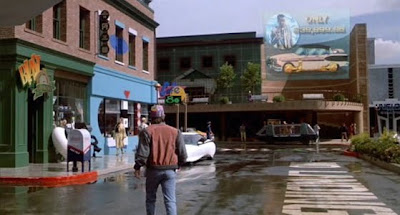Waste not
On a personal level I like to think that I can be ("can" being the operative word here) creative when it comes to home decor. In my mind I have aspirations of generating fantastic pieces of art to decorate the walls of my home. I see an old window frame and think, "how great would that be on the wall with a big, blown up picture behind it". Or look at my kid's empty formula containers and thought they would be really useful as planters. And maybe, just maybe, I could do it. Maybe I could create something useful and artistic, and even, dare I say, good, from items I have or have seen around. (Art is subjective, right?) My problem with my personal artistic ambitions is that I never get around to executing them. So the formula container planters end up going out with the recycling and the old window frame gets tossed. It's a waste.
Not to get all environmental huggy-huggy on you, but we, the people, really do waste a lot. From not turning off water when we brush our teeth, to letting things go to landfills because we are tired of them or they have served their purpose. This is a problem in the architecture and design community, as manufacturers send product samples and once those samples have served their purpose or become outdated the question of what to do with them arises. Very often materials get wasted and sent to landfill.
Today I had a really interesting call with Mike Dungan, cofounder of ZeroLandfill(TM) and President and CEO of BeeDance . For those of you who aren't familiar, ZeroLandfill is a wonderful project that began in Cleveland, Ohio. In 2006, ZeroLandfill™ began in 2006 as a recycling effort. Rather than throw expired specification samples into the trash, Mike and a few others organized a one-day "event" where architects and designers could drop off their old samples to be recycled. However, the program expanded when one of the team noted that that artists and educators would love the materials. These artists and educators where then invited to harvest the materials for their own projects.
Since inception, ZeroLandfill has collected materials in over 10 markets and is planning a great deal of expansion in 2011. I learned about ZeroLandfill through a client of ours who works with them to ensure that their product samples don't go to landfill. I also spoke with a talented artist, Nicole McGee who creates beautiful art using many items she has upcycled with ZeroLandfill.
These conversations have gotten me to rethink how I use the items around me. During our conversation Mike said, "In nature there's a lot of waste, but nothing's wasted. Humankind could achieve the same results."
So my readers, as manufacturers, designers, architects, think about how you are using what you have and what you are doing with it when you're done. Get creative and if you are like me, great ideas but not sure about the execution, look for programs like ZeroLandfill and see if you can give those old samples a good home.
The Future is....now?

public relations specialistFUNCTION:we’re into building things through marketing, design and public relations
Extending Reach
I can’t count the amount of times a client has said that they struggle with the sales force. Are they communicating correctly to the audience, do they know the products, are they using the tools, how do we track results? As much as those brochures or kits had all the bells and whistles to speak for themselves, often they remained in trunks or briefcases. At the same time, many of them made them into the right hands and did their job wonderfully. But that percentage that didn’t….how could we close that? How could we reach more of our audience effectively? Previously, that was a tough one.
Today, we have the opportunity to really extend the reach of our messaging and campaigns through integrated marketing and PR. To really create an impact. One that we can control. We can take that campaign, and broaden it by PR initiatives, as well as social PR. I never thought I’d get used to the idea of social PR - previously so different from the idea of design - but it has the ability to take all that we’ve created, and blast it into different mediums (we designers love recognition anywhere we can get it). Talk about reach. And, we can track it (because we all need validation that it’s a brilliant campaign).
We used to launch a product with a brochure and ad. Again, very reliant on the sales force, and in regards to the ad, where did it lead them? Now, we create an ad, that drives the audience to a microsite, which in turn provides a platform for an incredible amount of information. At the same time, increases database information. If the ad didn’t get them there, how about tweeting about the campaign? Or maybe speaking up on LinkedIn? Or a bylined article? So if the brochure is in the trunk….so be it. We’ll find another way. This is the advantage of integrated marketing and PR….where the sales force falls short of reach, PR and social PR can pick up the slack and carry the message. The more integrated, the more angles of attack.
Create impact through design. Design is an incredible tool, but even better when it generates a lot of impact.
michele emmons dehaven
principal + creative director
FUNCTION:we’re into building things through marketing, design and public relations




